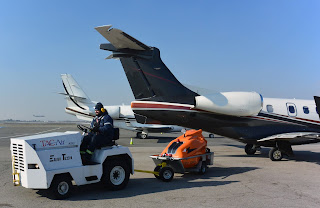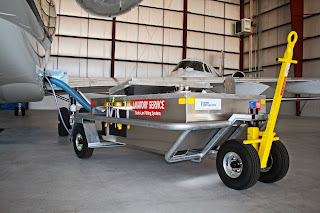Optimizing Passenger Safety on the Ramp
And when tourism and tourism-supported jobs are included, how much of the global economy peripherally relies on air travel is anyone’s guess. There’s no question about how undeniably crucial the aviation industry is for the health and growth of our economic, technological, social, and recreational pursuits. However, there’s a feature of the airline industry that’s far more important than any financial consideration: The safety of passengers. And one of the potential chokepoints of possible passenger injury is on the ramp, in and out of aircraft.
Keeping Passengers Safe Outside of Aircraft
Optimizing Ground Support Equipment (GSE) and Vehicle Use
For the most part, passengers are only going to be on the ramp outside of an aircraft when they are walking to or from the terminal to or from an aircraft. It’s generally easy enough for someone operating an aircraft tug, or taxiing in an aircraft, but with over 4 billion human beings a year (and counting) traveling by air, there is simply going to be more GSE and passengers in the same space. This makes it all the more important for GSE use to be scheduled, organized with telematics, coordinated with the airport and all the airlines to optimize GSE and vehicle use efficiency and safety.
Avoiding Passenger Injury From Aircraft
Unfortunately, aircraft present a passenger-injury risk beyond collisions. Injuries can be caused by propellers, jet blast or efflux, and even excessive noise. Jet efflux in particular can knock people over, into each other and objects, and blast objects and foreign object debris (FOD) in the direction of passengers. That risk can be mitigated with well-marked paths between terminal and aircraft, one that obviously doesn’t pass closely to running engines or propellers. If the route is too long or too circuitous, consider shuttling passengers to and from terminals and aircraft. Of course, remove any path-markers after use and any other FOD or obstructions.
Keeping Passengers Safe Inside of Aircraft
The most serious risk to passengers inside aircraft still on the apron is the risk of fire. The risk of fire is particularly pronounced during refueling. Refueling errors resulting in spills, striking sparks, and static charges igniting fumes are all risks. Ensure that all refueling technology and GSE is up to date, appropriately maintained, and used cautiously by trained crew. And make sure that the flight crew is familiar with every aircraft’s exits and that they’re aware of any passengers with mobility issues.
Minimizing Passenger Risk From Collisions
Ensure that passengers remain seated whenever an aircraft is moving. Good communication and cooperation between airlines, flight crews, and ground crews operating GSE and otherwise is critical to avoid collisions between aircraft and other aircraft or GSE. In unusual circumstances, like an unplanned evacuation of terminals or aircraft onto the ramp, establish training protocols and make sure all flight and ground crew are familiar with them.
About AERO Specialties
AERO Specialties is well-established in the aviation industry as standard-setting innovators and thought leaders. Due to their commitment to leading-edge research and technological advancement, their ground support equipment (GSE) and associated aviation equipment is recognized throughout the industry as meeting and exceeding the highest standards of quality and reliability. That same dedication is responsible for their ensuring that the whole AERO Specialties staff—from sales and support to the mechanics—are given thorough training on all of their GSE and the roles and responsibility of airside ground crews. From their aircraft tow tractor line to GSE manuals, AERO Specialties can meet every one of your aviation business’s needs.
Discover everything you need to help your aviation business take flight with AERO Specialties, at Aerospecialties.com




Comments
Post a Comment